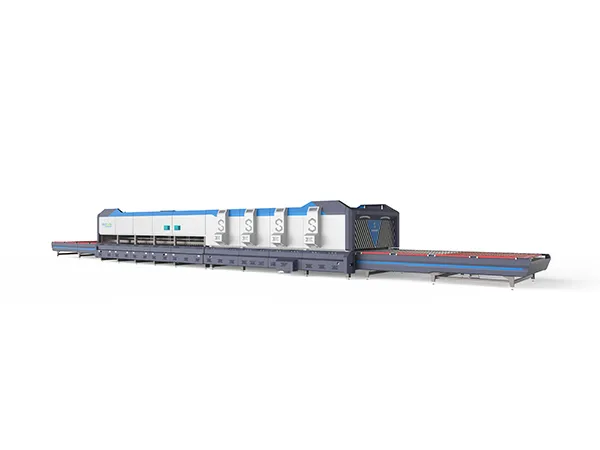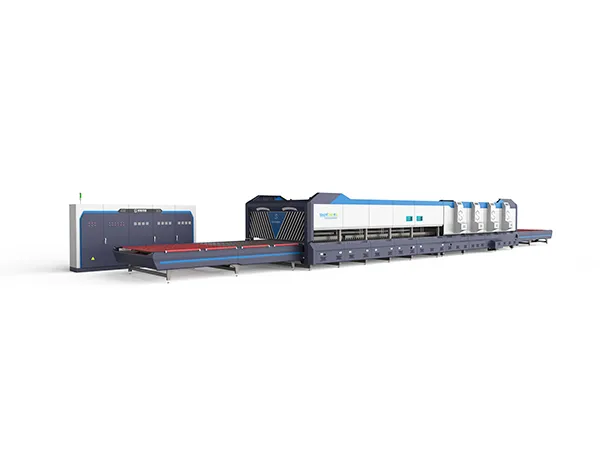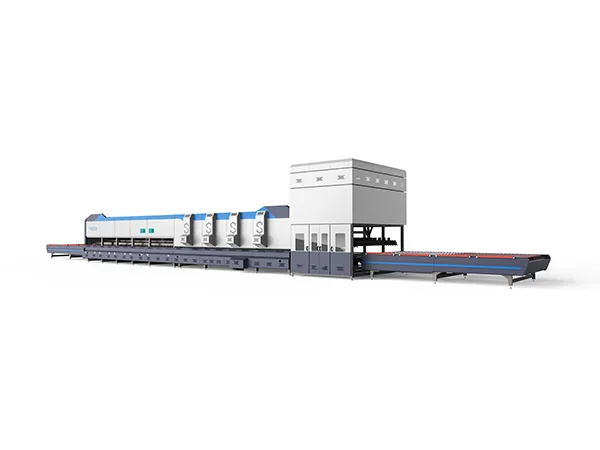A flat glass tempering furnace is a specialized piece of equipment designed for the tempering of flat glass sheets, commonly used in architectural applications, automotive glass, and furniture. Here are the key aspects of a flat glass tempering furnace:
Key Features:

Heating Zone:
Even Heating: Uses infrared heaters, convection heaters, or a combination to achieve uniform temperature across the glass surface.
Temperature Range: Typically heats glass to around 600°F to 1,200°F (315°C to 650°C).
Soaking Zone:
Controlled Environment: Maintains the glass at the target temperature for a specific time to ensure thorough heating.
Cooling Zone:
Rapid Quenching: Utilizes high-velocity air jets to cool the glass quickly, creating surface compression and enhancing strength.
Automation and Control:
Advanced Control Systems: Programmable logic controllers (PLCs) and touch screens for monitoring and adjusting temperature and timing.
Data Logging: Many furnaces include features for recording and analyzing the tempering process.
Energy Efficiency:
Insulated Design: High-quality insulation helps reduce energy consumption.
Variable Speed Fans: Adjust airflow as needed for efficient cooling.
Working Principle of Flat Glass Tempering Furnace

A flat glass tempering furnace operates through a systematic process to strengthen glass. Here’s how it works:
Loading: Flat glass sheets are placed on a conveyor system that transports them into the furnace.
Heating: The furnace uses infrared heaters or convection methods to evenly heat the glass to a target temperature (around 600°F to 1,200°F). This step softens the glass without melting it.
Soaking: The glass remains at this temperature for a specified duration, allowing the heat to uniformly penetrate and stabilize.
Quenching: After soaking, the glass is rapidly cooled using high-velocity air jets. This sudden temperature change creates surface compression, enhancing strength and making the glass more resistant to impact and thermal stress.
Cooling Zone: The glass continues to cool in a controlled environment to avoid warping or cracking.
Unloading: Once cooled, the tempered glass sheets are removed for inspection and further processing.
This process results in stronger, safer glass suitable for various applications. If you want to delve into any specific part of the process, just let me know!









